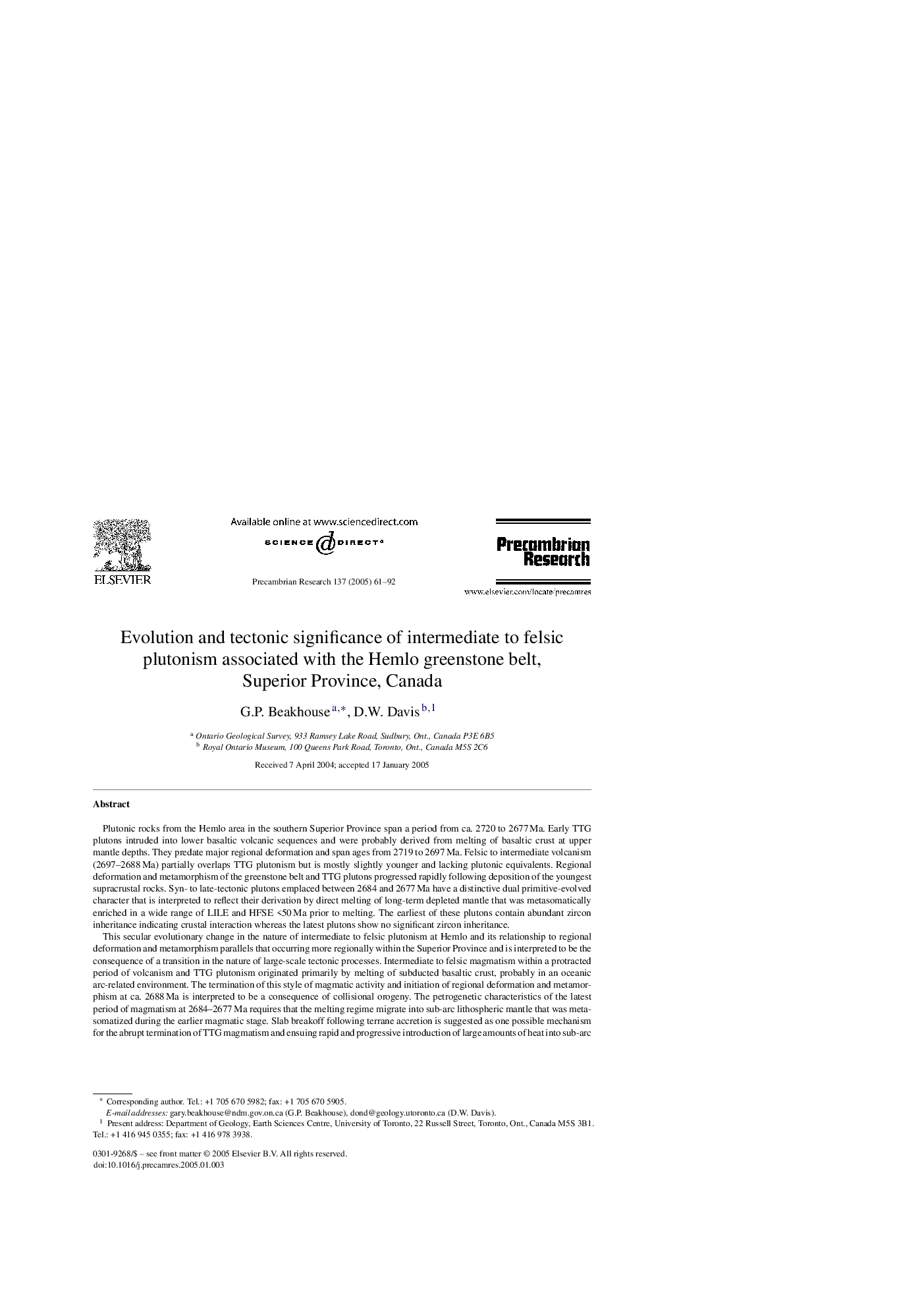| Article ID | Journal | Published Year | Pages | File Type |
|---|---|---|---|---|
| 9533709 | Precambrian Research | 2005 | 32 Pages |
Abstract
This secular evolutionary change in the nature of intermediate to felsic plutonism at Hemlo and its relationship to regional deformation and metamorphism parallels that occurring more regionally within the Superior Province and is interpreted to be the consequence of a transition in the nature of large-scale tectonic processes. Intermediate to felsic magmatism within a protracted period of volcanism and TTG plutonism originated primarily by melting of subducted basaltic crust, probably in an oceanic arc-related environment. The termination of this style of magmatic activity and initiation of regional deformation and metamorphism at ca. 2688Â Ma is interpreted to be a consequence of collisional orogeny. The petrogenetic characteristics of the latest period of magmatism at 2684-2677Â Ma requires that the melting regime migrate into sub-arc lithospheric mantle that was metasomatized during the earlier magmatic stage. Slab breakoff following terrane accretion is suggested as one possible mechanism for the abrupt termination of TTG magmatism and ensuing rapid and progressive introduction of large amounts of heat into sub-arc mantle and basal portions of the crust. This pattern of development is seen in many Superior Province greenstone belts but is older in the north. Therefore, it is probably an inevitable consequence of the tectonic processes that led to accretion of the Superior Province.
Related Topics
Physical Sciences and Engineering
Earth and Planetary Sciences
Geochemistry and Petrology
Authors
G.P. Beakhouse, D.W. Davis,
